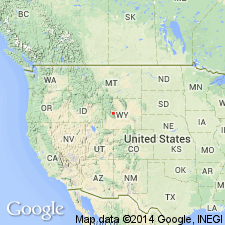
- Usage in publication:
-
- Spanish Valley soil*
- Modifications:
-
- Named
- Dominant lithology:
-
- Soil
- AAPG geologic province:
-
- Paradox basin
Summary:
Name applied to a very weakly developed azonal soil formed on the lower member of Gold Basin formation (new). Is older than upper member of Gold Basin. Soil profiles, soil facies map, correlation charts. Type locality is in Spanish Valley in wall of short arroyo tributary to Pack Creek about 3/4 of a mi below dam in SE1/4 NE1/4 sec 22, T26S, R22E, Grand Co, UT in the Paradox basin. Is exposed continuously in the northern Spanish Valley. Cannot be separated into facies equivalent to soil groups. Incipient Pedalfer and Pedocal facies distinguished by their acid or alkaline reaction. Boundary between the facies is drawn where the pH of the soil is 7.0 which is in the area of average altitude about 7,000 ft. In the Pedalfer facies, the A horizon is 1 to 6 in thick, gray to black, loose, friable and structureless, and the B horizon is 4 to 6 in thick, brown, loose to friable, and structureless. The Pedocal facies has a calcareous and alkaline A horizon, and a Cca horizon that cannot be clearly distinguished . Of Recent age.
Source: GNU records (USGS DDS-6; Denver GNULEX).
For more information, please contact Nancy Stamm, Geologic Names Committee Secretary.
Asterisk (*) indicates published by U.S. Geological Survey authors.
"No current usage" (†) implies that a name has been abandoned or has fallen into disuse. Former usage and, if known, replacement name given in parentheses ( ).
Slash (/) indicates name conflicts with nomenclatural guidelines (CSN, 1933; ACSN, 1961, 1970; NACSN, 1983, 2005, 2021). May be explained within brackets ([ ]).

